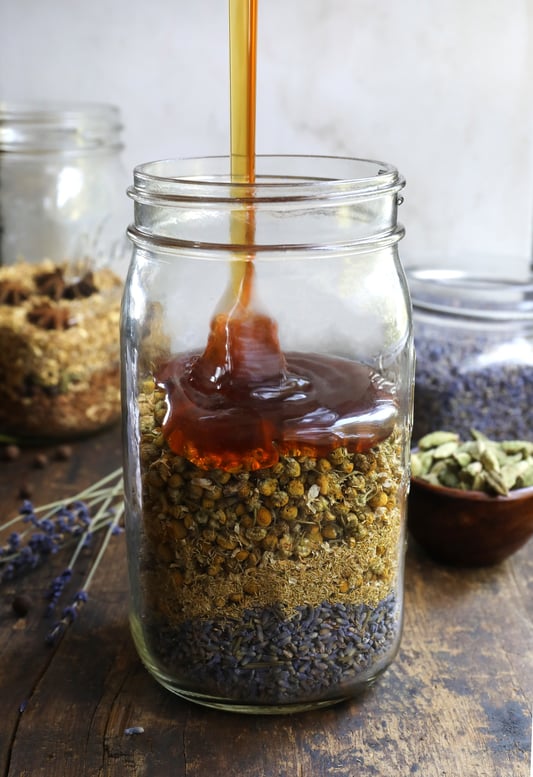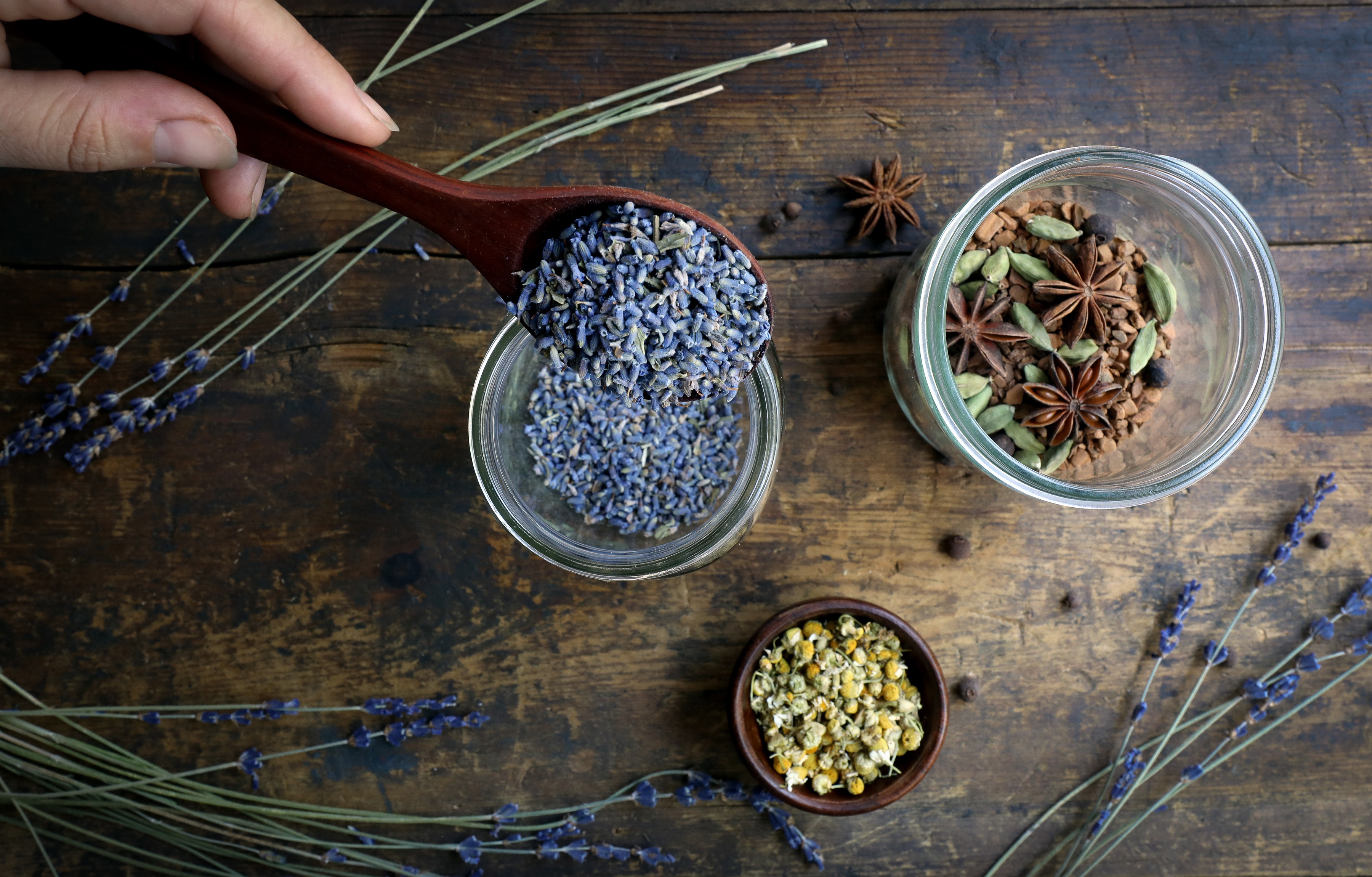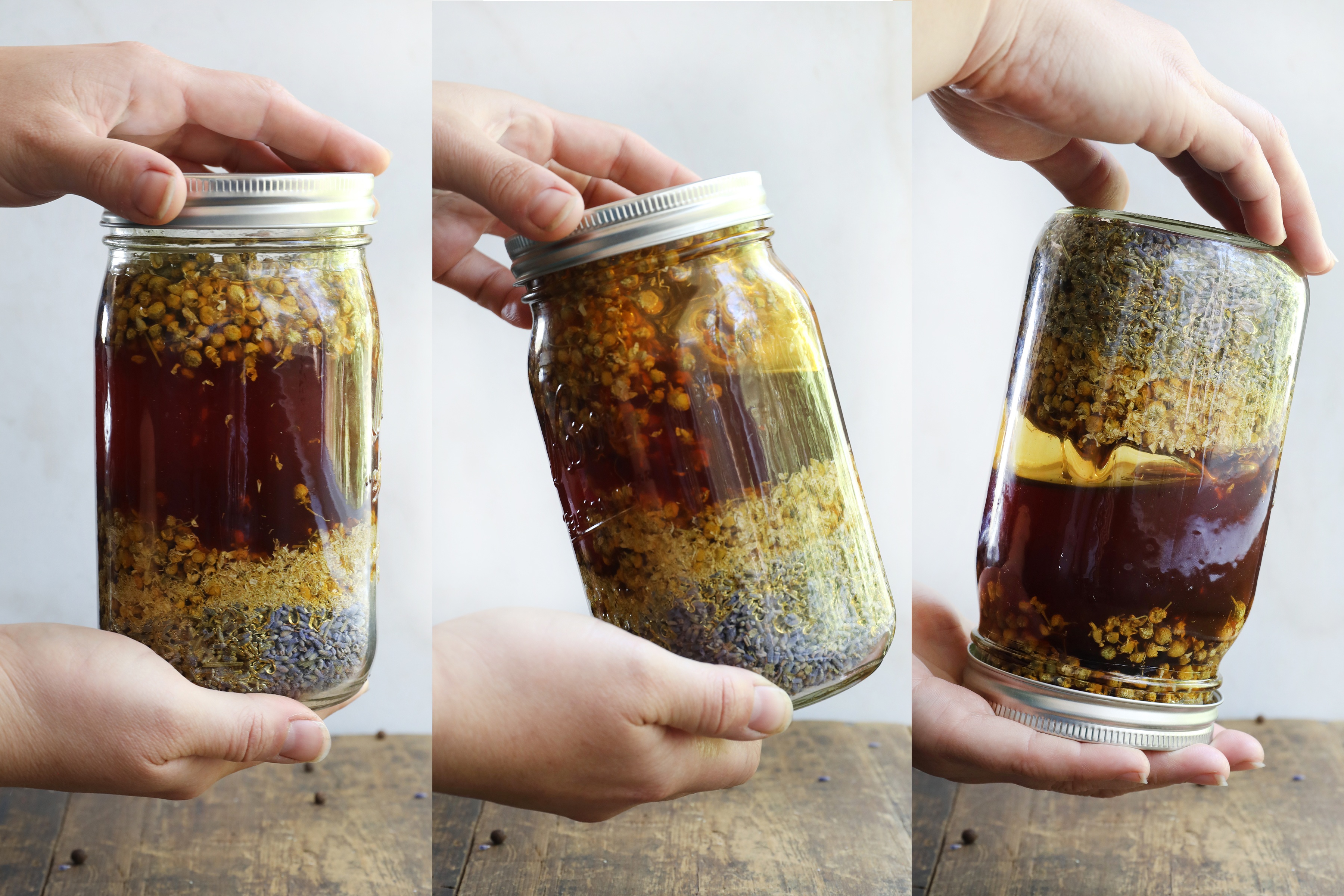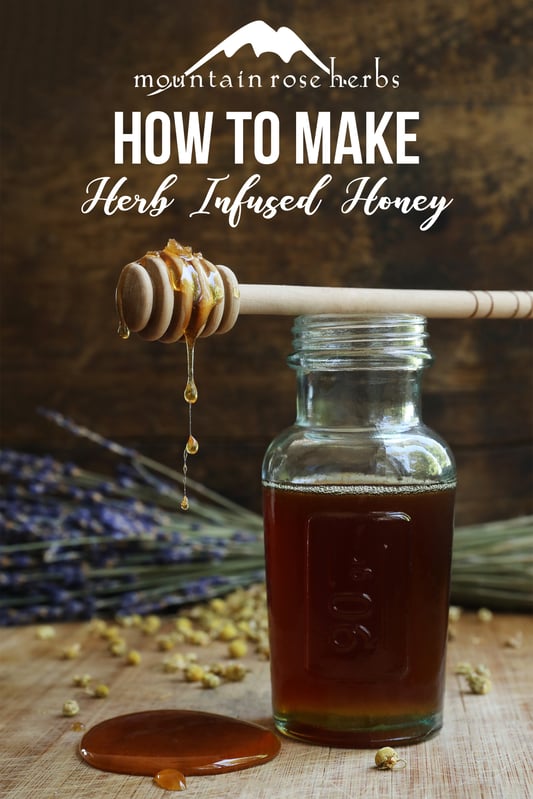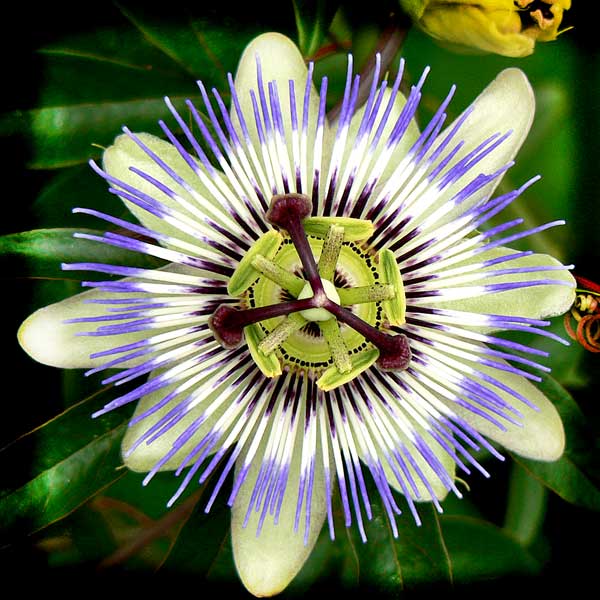When I moved from my home state of New Jersey to beautiful Oregon, I was exposed to so many new things. Among my favorite discoveries were the abundant, handwritten road signs that advertised fresh local produce, eggs, and honey. Intrigued and excited by these signs, I stopped in to meet my local neighborhood beekeeper, who was thrilled that I knocked on his door to say hello. He brought me over to his hives and taught me a lot about what it means to care for bees. I wanted to support my farm neighbor, so I bought a gallon of honey. What I was going to do with that much honey, I had yet to figure out.
When I got home, I started looking through my cupboards to see if some inspiration would call out to me. Having been an “herbal tinkerer” for some time, I kept coming across herb after herb, and it soon became apparent that I was meant to make some magic with these old plant friends and my sweet new bee bounty. A little afraid to ruin my perfect golden jar of goodness, I decided to start experimenting with my fail-safe herb, lavender.
After three weeks of excitingly waiting for the floral notes to infuse, I was left with the most delicious honey I had ever eaten!
How to Infuse Honey with Herbs
There are two main ways to infuse herbs into honey: without heat, or with heat. There are pros and cons to each method, so we've included both here for your reference.
No Heat Method
Like many folk herbalists, I like to infuse herbs into raw honey to enjoy the benefits of both the botanicals and the unprocessed honey in each spoonful. However, I usually use dried herbal leaf and flower material, rather than fresh plant matter and/or denser plant parts like barks and roots. If you're interested in creating honeys with the latter type of ingredients, you may find more success with the heated method below!
Yields 1 quart (32 ounces).
Ingredients
- Dried organic herbs and spices of your choice (see list below for inspiration)
- Raw, local honey
Directions
- Fill a clean quart jar a little less than halfway with dried herbs and spices.
- Pour in your honey and watch as it slowly finds its way to the bottom. Be sure that your herbs are fully submerged.
- Put a lid on the jar and place in a sunny windowsill. Keeping it warm will allow the herbs to infuse better and also makes the liquid more pourable.
- Turn the jar over at least once per day.
- You will want to allow this mixture to infuse for at least one week, though I prefer to infuse for 3 to 4 weeks. The longer you leave it, the stronger the flavor will be.
- When the honey has infused to your taste, strain out the herbs.
- Store your herb-infused honey in a cool, dark place in a tightly sealed jar to help maintain optimal freshness.
Pro Tips:
- Over time, I have discovered that using a chopstick in the beginning to help push the honey to the bottom is really helpful and speeds up the process a bit.
- You will need to keep checking the level of the honey over the next few days as gravity works its magic and the honey fills in all the nooks and crannies. Add more honey as needed.
- When you strain out the herbs, don’t toss those valuable leftover botanicals away! I save them and add them right into my teas or other warm drinks as a flavor booster.
Heated Method
As noted in the no-heat method intro above, there are times when it may be worthwhile to use heat to create your herbal honey, even though you will lose some of the beneficial properties of raw honey by doing so. For example, if you choose to infuse honey with fresh herbs, it's important to keep in mind that the extra moisture introduced into the infusion from the fresh material increases the risk of culturing undesirable bacteria that can cause your honey to ferment—like mead, but in an uncontrolled way. Heating your honey during the infusion process allows you to create a much more shelf-stable end product. Honey also isn't particularly effective at extracting the properties of dense, woody materials like bark and roots at room-temperature, so adding heat can really help the infusion process along.
Watch as author and clinical herbalist Maria Noël Groves of Wintergreen Botanicals demonstrates how to infuse honey using heat (a method she learned from her teacher and mentor, famed herbalist Michael Moore).
Yields about 1 cup (8 ounces).
Ingredients
- 1/2 cup dried or fresh organic herbs and spices of your choice (see list below for inspiration)
- 2 cups local honey
Directions
- Transfer herbs to cold saucepan.
- Pour your honey into saucepan over herbs and turn on stove heat to medium.
- Stir to fold herbs into honey. This process will become easier as honey heats up. Heat slowly so that herbs don't scorch and honey does not boil over!
- Stir frequently until honey just begins to bubble. Remove from heat and let cool.
- Repeat steps 3 and 4 several times, either throughout the day or over multiple days (covering between heatings to keep out insects).
- When the honey has infused to your taste, strain out the herbs.
- Store your herb-infused honey in a cool, dark place to help maintain optimal freshness.
Pro Tips:
- You can skip the stove by using a yogurt maker (which keeps its heat around 100° F) or placing the jar in your car or a window during warm, sunny weather (similar to heating methods that can be used to create herb-infused oils).
- Leftover honey residue and honey-soaked herbs can be used to make a sweet tea concentrate that can be diluted into a tasty hot or iced beverage.
Excited to get started with blends? Try out my two most reliable herbal honey recipes below!
Herbal Honey Recipes
Cinnamon Spice Honey
Yields 1 quart (32 oz.)
- 1 1/4 cups organic cassia cinnamon chips
- 3/4 cup organic ginger root
- 6 organic cardamom pods
- 4 organic star anise pods
- Honey (raw local honey is best)
Sleepy Time Honey
Yields 1 quart (32 oz.)
- 3/4 cup organic lavender flowers
- 3/4 cup organic chamomile flowers
- Honey (raw local honey is best)
While I’m sure you won’t have trouble finding uses for this special treat, some of my favorite ways to enjoy it are drizzled on fresh fruit, on ice cream, on toast, and in tea!
The options for creating herb-infused honey are virtually limitless, so feel free to explore! I have shared two of my favorite blends, but you can use my ratios to create your own unique flavors. Some of my other favorite herbs to infuse:
- Lavender
- Rose Petals
- Lemon Balm
- Chamomile
- Basil
- Whole Cloves
- Ginger
- Sage
- Peppermint
- Cinnamon
- Vanilla
- Star Anise
- Orange Peel
- Rosemary
- Thyme
Looking for MORE sweet herbal treats?
Learn How to Make Herbal Syrups!
You might also enjoy:

